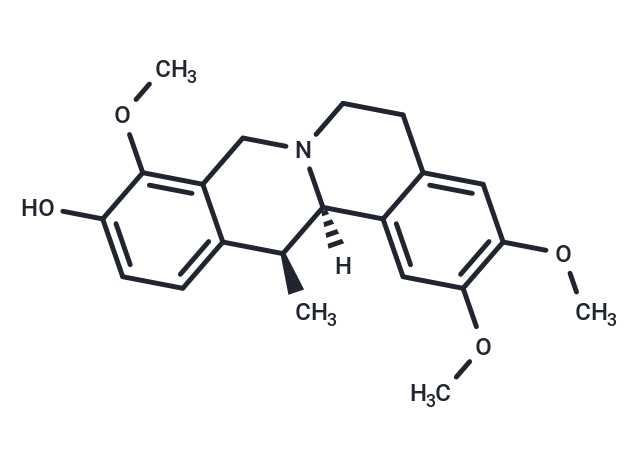Shopping Cart
- Remove All
 Your shopping cart is currently empty
Your shopping cart is currently empty

Yuanhunine is a natural product for research related to life sciences. The catalog number is TN6392 and the CAS number is 104387-15-7.

| Pack Size | Price | Availability | Quantity |
|---|---|---|---|
| 5 mg | $630 | Backorder | |
| 1 mL x 10 mM (in DMSO) | $650 | Backorder |
| Description | Yuanhunine is a natural product for research related to life sciences. The catalog number is TN6392 and the CAS number is 104387-15-7. |
| In vitro | METHODS AND RESULTS:We have assessed the release of histamine from mast cells by smooth muscle contraction. 0.3 microg/ml compound 48/80 showed no effect on concentration-response relationship of histamine in rabbit aorta. Compound 48/80 induced release of histamine from rat mast cells. When aorta was stimulated by compound 48/80 in the presence of mast cells, contraction was evoked in concentration-dependent manner. This mast cell-dependent contraction was completely blocked by H1 receptor antagonist, 1 microM diphenhydramine. When mast cells was treated with compound 48/80 inhibitor benzalkonium chloride, mast cell-dependent contraction was inhibited, although benzalkonium chloride itself showed no effect on concentration-response relationship of histamine in rabbit aorta. At high concentration of 10 microg/ml, benzalkonium chloride itself evoked histamine release from mast cells and indeed inhibitory effect of 10 microg/ml benzalkonium chloride on mast cell-dependent contraction was lower than that of 3 microg/ml. We have applied this bioassay to search anti-allergic ingredient from a total methanolic extract of Corydalis tuber (Corydalis turtschaninovii BESSER forma yanhusuo Y. H. CHOU et C. C. HSU). Successively, we have isolated five fractions. The fractions I-IV are identified to be corybulbine (1), tetrahydropalmatine (2), corydaline (3) and Yuanhunine (4), respectively. Main component of fraction V is the mixture of 3 and canadine (5). Fractions II and V significantly inhibited mast cell-dependent contraction in rabbit aorta as well as inhibited histamine release from rat mast cells. Furthermore, fractions I, III and V inhibited histamine-induced contraction in rabbit aorta at non-competitive manner. CONCLUSIONS: From these results, combination of rat mast cells and rabbit aorta is good bioassay to search the anti-allergic ingredient, and we have obtained effective fractions from Corydalis tuber using this assay. |
| Molecular Weight | 355.43 |
| Formula | C21H25NO4 |
| Cas No. | 104387-15-7 |
| Relative Density. | 1.26g/cm3 |
| Storage | Powder: -20°C for 3 years | In solvent: -80°C for 1 year | Shipping with blue ice. |

Copyright © 2015-2025 TargetMol Chemicals Inc. All Rights Reserved.